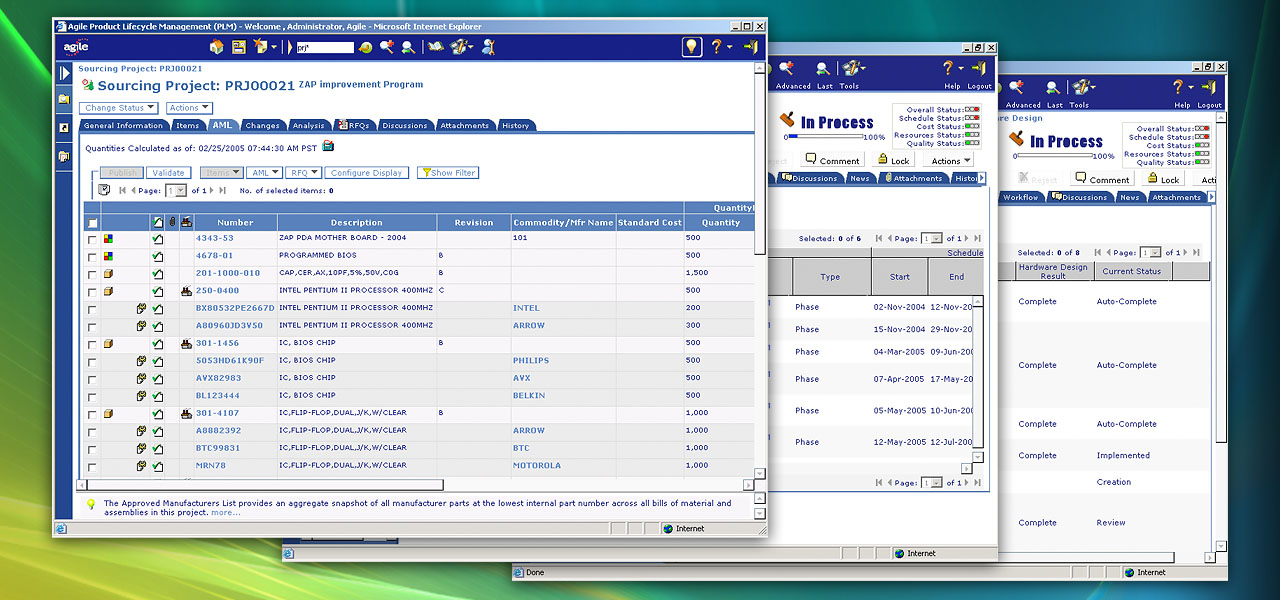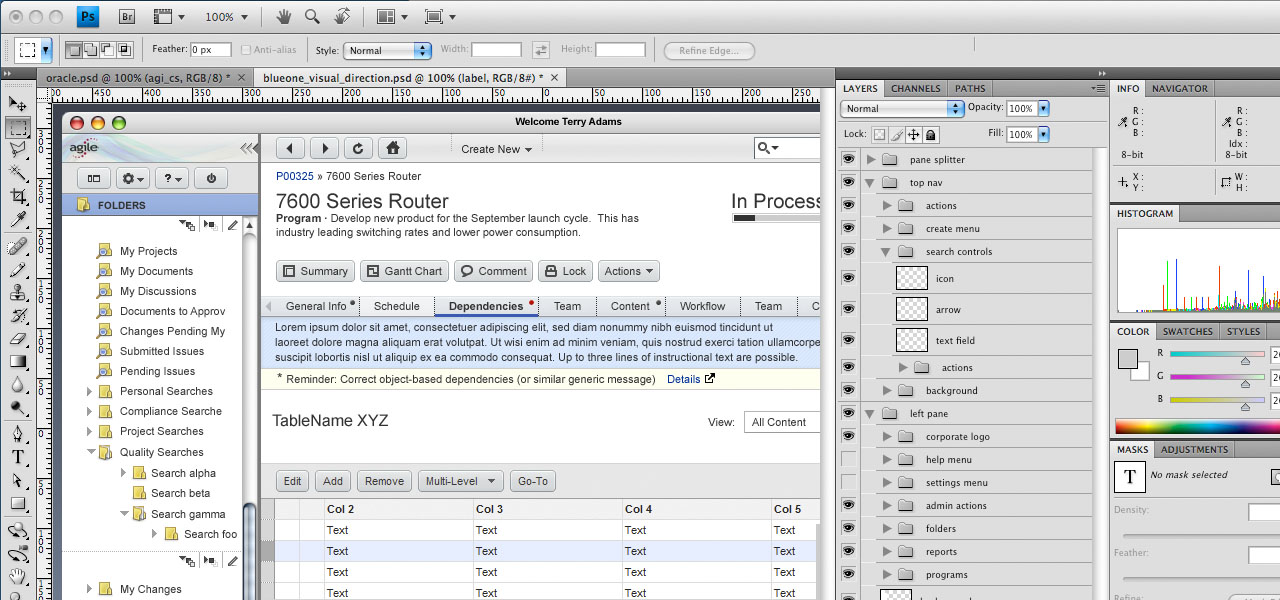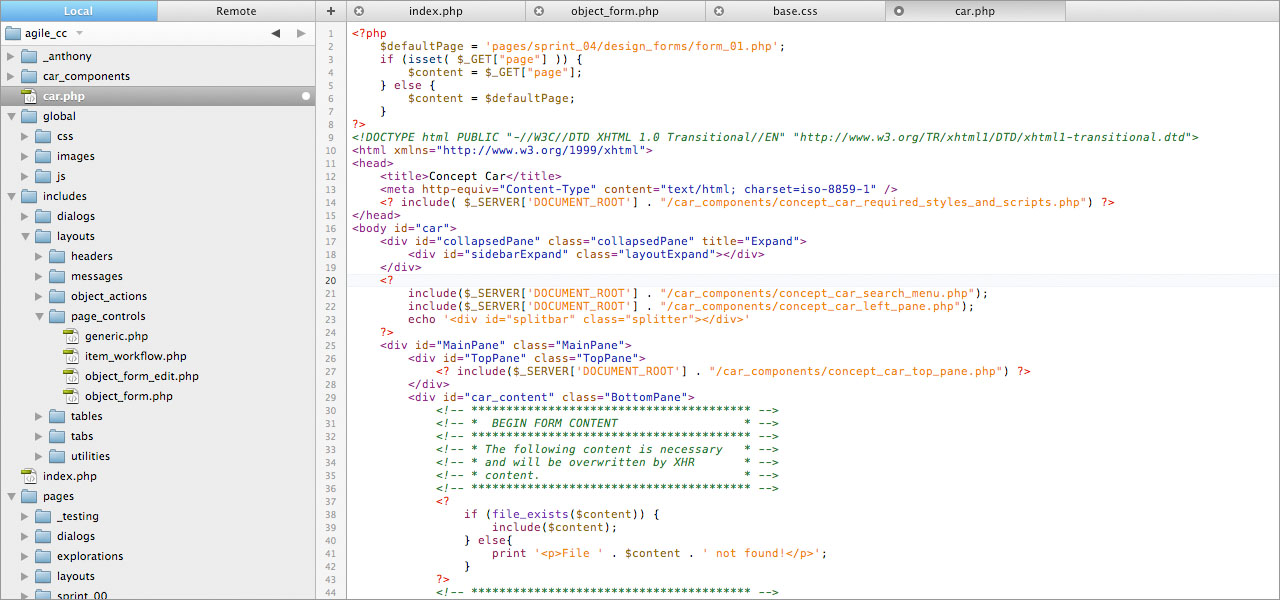![]()
Users take 50% less time to complete core tasks after the GoInvo redesign
Product Lifecycle Management (PLM) is arguably the most complex enterprise software there is. It tracks every single piece and part in the products a company makes, all the way from initial planning to end-of-life. For example, if you blow up a laptop computer there are literally thousands of individual components that go into making it. For each of those there are multiple other components and configurations that were considered instead of what was actually used. Thus for each product there are tens of thousands of parts that are in different phases of use or consideration. For many Oracle customers virtually every knowledge worker uses Agile PLM. Some might use it once a week for a few minutes; others spend their whole day in it. The use cases run in the hundreds or thousands. Each user expects the software to work for them, ranging from needing great complexity and power to pure simplicity and clarity. It is a knotty design challenge.
Oracle already had a good thing: Agile had been a market leader in PLM for over a decade. However, like many software companies that became successful thanks to their technology, the UI design languished and eventually became a liability. In 2005, when looking at the opportunities and threats for Agile PLM, a major upgrade to the user experience became a top strategic goal. They realized that the process of turning that liability into an ongoing advantage required not just a redesign of the product, but a re-thinking of the product organization. To help on both fronts they chose GoInvo.
Over two years GoInvo deeply engaged the Oracle Agile PLM team, from the top executive levels down to the junior contributors. We worked with their executive and management teams to lead organizational change and create transparency. We contributed to the replacement of their waterfall process with agile methodologies. We helped them build a best-of-breed 20 person user experience team from scratch. And of course we also completely re-designed the application.
“We didn’t bring in GoInvo to redesign our product, which they did. We chose GoInvo to help us take our two user experience people and build an outstanding team. By the time we were done working together we had a large cross-functional team and a completely new and effective way to design and develop an exceptional next generation product suite.”

“Results showed that, on average, it took users 50% less time to complete a subset of core tasks on Agile 9.3.”


“With 9.3 we can already see an improved level of usability and productivity.”

